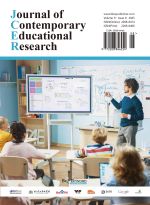Abstract
Traditional educational paradigms prioritize age-based progression and early specialization as key indicators of academic potential, especially in STEM. This study challenges this norm by analyzing university entrance ages of 226 Nobel Physics Laureates (1901–2024). Results reveal a right-skewed distribution (Median = 18; Mean = 18.8; SD = 2.4) with substantial variance (14–25 years), including outliers like Lev Landau (14) and Arthur Ashkin (24). Notably, figures such as Guglielmo Marconi achieved breakthroughs without formal university entry, relying on self-directed learning. Using survival analysis and multinomial regression, we find “non-traditional” timelines, accelerated, delayed, or non-formal pathways, correlate with distinct creative advantages. This suggests current “timeliness” metrics poorly predict transformative scientific achievement. We propose an “Optimal Chrono-Diversity” framework advocating flexible entry systems, enhanced adult learner support, and recognition of autodidactic potential to inform educational policy and cultivate innovative STEM talent.
References
Tannenbaum A, 1983, Gifted Children: Psychological and Educational Perspectives. Macmillan, Chapter 3.
Subotnik R, Olszewski-Kubilius P, Worrell F, 2011, Rethinking Giftedness and Gifted Education: A Proposed Direction Forward Based on Psychological Science. Psychological Science in the Public Interest, 12(1): 3–54.
Zuckerman H, 1977, Scientific Elite: Nobel Laureates in the United States. Free Press, Chapter 2.
Simonton D, 2004, Creativity in Science: Chance, Logic, Genius, and Zeitgeist. Cambridge Handbook of Creativity: 322–337.
Nobel Prize Organization, 2024, Nobel Laureates in Physics.
Shannon C, 1948, A Mathematical Theory of Communication. Bell System Technical Journal, 27(3): 379–423.
Cox D, 1972, Regression Models and Life-Tables. Journal of the Royal Statistical Society: Series B, 34(2): 187–220.
Berliner D, 2006, Our Impoverished View of Educational Reform. Teachers College Record, 108(6): 949–995.
Colangelo N, Davis G, 2003, Handbook of Gifted Education. Allyn & Bacon, Chapter 3.
Merriam S, Caffarella R, Baumgartner L, 2007, Learning in Adulthood: A Comprehensive Guide. Jossey-Bass, Chapter 2.
Duckworth A, Peterson C, Matthews M, et al., 2007, Grit: Perseverance and Passion for Long-Term Goals. Journal of Personality and Social Psychology, 92(6): 1087–1101.
